Relevance and Resilience
A Discussion Guide for Considering
the Mission, Vision and Values of Central College
Preface
The saga of Central College passed down throughout its long history is dotted with defining moments. These are best understood and interpreted years later as the response to opportunities and challenges blended to guide a pathway into and through an uncertain future. Looking back, we connect and compress events, filter circumstances and pull threads through time that we can see today to tell the story of our past. Yet these interpretive lenses were not available or visible to our predecessors who lived through these times and worked with anticipation alone.
Our rich inheritance, however, did not come to us by chance or luck. Previous generations paused at key times to consider the mission of the college, a vision for the future and the values that would undergird subsequent thought and action. Such an occasion has now arrived for us in this moment as we are together called to reflect on our mission, vision and values as an academic community. We seek to both advantage the present and benefit our successors through this effort.
During the April 2022 Board of Trustees meeting, the Board asked me to prepare a white paper to inform the conversations we need to have together and assist in designing a process that would permit broad participation across our constituencies both on and off campus. The result is this discussion guide entitled, Relevance and Resilience. As you read, you will discover that we are focused for now on asking the right questions, since if we get the questions right the answers will more likely follow as this shared experience unfolds.
The core of this paper is expressed in seven broad topic areas. I offer these to stimulate conversation knowing that as we diverge, related areas of interest will likely surface and extend the discussion further. Admittedly, these topic areas present large questions that defy easy answers.
- Living and Learning in a Residential Community
- Exploring Learning Opportunities Beyond the Campus
- Embracing Evolving Pedagogical Approaches
- Guiding the Ongoing Development of our Academic Program Portfolio
- Building and Sustaining a Culture of Inclusion
- Understanding and Interpreting Our Role in Intercollegiate Athletics
- Understanding and Interpreting our Church Affiliation
Each topic area has a set of discussion questions to help foster both individual reflection and collective conversation. We will also sponsor a series of organized discussion opportunities in various settings to share thoughts and ideas. We will seek to capture the essence of these conversations to eventually inform the fresh articulation of our mission, vision and values.
This process is intended to engage us for about two years and there will be many opportunities to consider these important questions. Accordingly, the immediate task is to quiet ourselves, read this discussion guide and get prepared for an extended set of conversations.
This discussion guide, as well as related materials and information available here, is designed specifically to support this process. Also, a special email account centralmission@central.edu is available for individuals or groups to submit comments on the seven topic areas and share helpful resource materials that will advance our discussions. I ask for your patience as we finish the work of setting up the process, organizing the materials and scheduling our discussions. More details will be forthcoming in the weeks and months ahead.
For now, I invite you to read and reflect.
Mark L. Putnam, President
September 2022
Central College Mission Statement
Central College is a residential liberal arts college dedicated to helping students discover and develop their greatest potential. Guided by its ecumenical Christian tradition, the college community engages in vigorous, open inquiry in pursuit of academic excellence.
The college nurtures the development of the mind while fostering spiritual and emotional maturity and physical well-being. Central integrates career preparation with the development of values essential to responsible citizenship, empowering graduates for effective service in local, national and international communities.
Background and Context
Pursuing a conversation about mission, vision and values for an institution of higher learning with a wide array of constituent perspectives is a challenging endeavor. Yet the task at hand is to thoughtfully reflect on these foundational elements of Central College and ensure that our collective understanding and written articulation adequately informs the work of the college in the present day and for the years to come. This occasion presents itself in two ways.
First, on the conceptual level, this is a timely undertaking for the college given the dynamics of change accelerating in the world surrounding us. Our summary description for these dynamics is the “Six-Pack of Change.” As a campus community we have reviewed this list occasionally as a reminder of the myriad influences that continue to reshape the context in which we pursue our mission, embrace our vision and live out our values. Our six-pack includes the following:
- Demographic Decline
- Economic Uncertainty
- Workforce Expectations
- Technological Innovation
- Societal Change
- Public Policy
This interacting set of complex forces has increased the pace of change in higher education. For example, demographic decline is well documented in falling birthrates, but the downstream impact of participation in postsecondary education remains uncertain as the other five influencers have profound effects on enrollment patterns across the sectors of higher education. Volumes have been written on each of these dimensions of change, but for our purposes, we are simply advised to see these as roaming agents in our landscape. They need not define the mission, vision and values of Central, but they are sure to be factors in considering the pathways we will follow in the years to come.
Second, on the practical level, the college is approaching its journey of reaccreditation with the Higher Learning Commission. This process expects the college to formally consider its mission since this is foundational to the application and interpretation of all other criteria for accreditation. Central’s formal process of developing the required self-study document will begin in earnest in 2023. The accrediting team visit is scheduled for the fall of 2025. Those who have participated in this process in previous cycles will attest to the demands it places on the institution as we present the case to reaffirm our accreditation. This aspect is admittedly a compliance responsibility but bears considerable weight since accreditation is required for participation in federal and state financial aid programs, as well as our standing in the wider higher education landscape.
What follows is the relevant section from HLC’s Criteria for Accreditation related to institutional mission.
Higher Learning Commission: Criteria for Accreditation
Criterion 1. Mission
The institution’s mission is clear and articulated publicly; it guides the institution’s operations.
Core Components
1.A. The institution’s mission is articulated publicly and operationalized throughout the institution.
- The mission was developed through a process suited to the context of the institution.
- The mission and related statements are current and reference the institution’s emphasis on the various aspects of its mission, such as instruction, scholarship, research, application of research, creative works, clinical service, public service, economic development and religious or cultural purpose.
- The mission and related statements identify the nature, scope and intended constituents of the higher education offerings and services the institution provides.
- The institution’s academic offerings, student support services and enrollment profile are consistent with its stated mission.
- The institution clearly articulates its mission through public information, such as statements of purpose, vision, values, goals, plans or institutional priorities.
1.B. The institution’s mission demonstrates commitment to the public good.
- The institution’s actions and decisions demonstrate that its educational role is to serve the public, not solely the institution or any superordinate entity.
- The institution’s educational responsibilities take primacy over other purposes, such as generating financial returns for investors, contributing to a related or parent organization or supporting external interests.
- The institution engages with its external constituencies and responds to their needs as its mission and capacity allow.
1.C. The institution provides opportunities for civic engagement in a diverse, multicultural society and globally connected world, as appropriate within its mission and for the constituencies it serves.
- The institution encourages curricular or cocurricular activities that prepare students for informed citizenship and workplace success.
- The institution’s processes and activities demonstrate inclusive and equitable treatment of diverse populations.
- The institution fosters a climate of respect among all students, faculty, staff and administrators from a range of diverse backgrounds, ideas and perspectives.
Accordingly, for both conceptual and practical reasons, the task of reflecting on our mission, vision and values is before us.
Process and Timeline
Throughout this process we must be disciplined to avoid making this an exercise in strategic planning, tactical decision-making or operational management. While these are important tasks for another day, a strategic-tactical-operational mindset tends to be overly influenced by the tyranny of the urgent. In so doing we risk overestimating short-term trends and underestimating long-term trends. Our shared responsibility is to elevate the discourse to the guiding principles and conceptual frameworks that undergird the idea of a college in this era and the unique purpose it intends to pursue. Invariably, current realities, individual priorities and specific agendas will be interlaced in the deliberations that will unfold in the coming months. As discussions drift into the interests of the day, we are each called to remind one another that our thoughts should be turned to the mission, vision and values of the college. In subsequent years there will be ample occasion to formulate strategies for achieving our ambitions.
The two-year timeline for this work as defined by the Board of Trustees calls us during the 2022-23 academic year to engage in a collective conversation that diverges. At all levels of the institution, we will be exploring questions about the fundamental characteristics of the college and the extent to which these are evolving. External influences also play a critical role since the work of the college is highly contextual. Still there are interests the college may pursue that run counter to the trends and patterns of society insofar as our mission, vision and values call us to do so. In this first year we will not seek to answer any questions, but rather ensure that we are asking the right questions. The Board of Trustees is establishing a Mission Statement Study Committee to guide this overall effort under the broad supervision of the board’s Committee on Trusteeship. As part of this process, opportunities for all stakeholders in the college will be organized to maximize participation.
During the second year of this process, we will seek to converge on our core ideas about mission, vision and values and find the best ways to articulate these for ourselves and our successors. The 2023-24 academic year will see the establishment of a Mission Statement Drafting Committee. This committee will be given the task of building on stakeholder input and formulating companion statements on mission, vision and values. Additional opportunities for stakeholder input are anticipated and the process is expected to be iterative. This work will conclude during the April 2024 Board of Trustees meeting at which time formal consideration will be given to the statements brought forward by the drafting committee and as recommended by the Committee on Trusteeship. As noted in the College Bylaws, the Board of Trustees has the authority to “Determine and periodically review the college’s mission, purposes and relevant policies” (Article I, Section 1, Item A).
NOTE: Various written resources are available to members of the campus community on the myCentral website under the tab, “Key Institutional Documents.” Board members may contact the president’s office to request materials. These include such things as the college’s Articles of Incorporation and Bylaws, among others. Such documents are referenced or quoted partially in this paper and readers are encouraged to refer to the appropriate website to view these documents in their entirety.
Discussion Topics
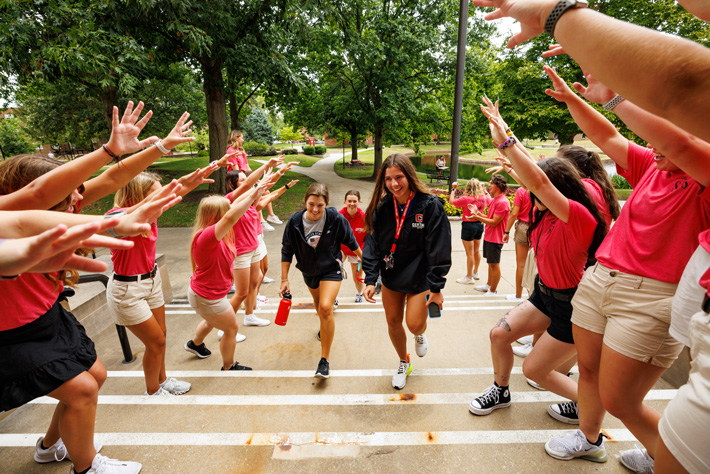
Relevance and Resilience
The title for this discussion guide draws attention to two broad themes intended to stimulate conversation. First, relevance reminds us that through the nearly 170 years of Central College’s history, this academic community has adapted to the changing needs and interests presented by its stakeholders, most importantly, students. The college has demonstrated a remarkable ability to reshape its pursuits in service of these broader interests across generations. Central must continue to matter to those who will be attracted to its mission, vision and values and seek to be engaged with us in this shared experience of learning.
Second, the college must be resilient in the face of uncertainty. Forecasting the future has always been a risky activity, but it seems to be even less reliable than ever before. We can be confident that this institution will face many challenges in the years to come, some anticipated and some not. The questions that accompany relevance and resilience will force us to challenge our underlying assumptions and, as a result, affirm or amend our articulation of mission, vision and values.
This discussion guide is modest in its assertions about the future, though it is intended to provoke a healthy and constructive debate on a range of topics. To achieve this aim, the following pages present seven important characteristics of Central that have had an enduring influence on the ways we think about the college’s mission, vision and values. Each is explored briefly, and discussion questions are offered to prompt dialogue as various groups undertake the task of deliberation.
There are no answers in the pages that follow … only questions.

Living and Learning in a Residential Community
Core to the design of our learning experience for students is the underlying assumption that living in a residential community is foundational to effective learning. Today we see conflicting interpretations of the benefits and detriments that accrue from this kind of residential experience. Reaching back to our six-pack of change we witness here the interactions of technological innovation, workplace expectations and societal change. Advances in technology, in the view of some, have rendered the campus-based experience irrelevant to learning that can be achieved more efficiently in competency-based, self-paced asynchronous online learning with limited, if any, direct face-to-face contact. Those envisioning a fully developed “gig economy” with free agency dominant in the workforce see this kind of place-based learning to be inconsistent with the workforce of the future that will be increasingly virtual. There are those offering arguments that broad social interaction will diminish in the years to come as personal safety, public health and a desire for greater autonomy in maximizing personal preferences continues to advance.
By contrast, we see employers re-emphasizing the need to encourage direct human interaction in the workplace to foster creativity, build comradery and ensure productivity. Our experience in the wake of the COVID-19 pandemic also ran counter to the virtual ideal sponsored by some as we witnessed many struggling with isolation and expressing a strong desire to be physically present to others, despite some potential risk. Our underlying assumption is that learning is fundamentally a human enterprise, aided by the appropriate technologies. The restoration of many collective activities in the contexts of entertainment, sports and recreation would suggest the American society is not retreating from large gatherings or communal living.
These interacting trends present an ongoing uncertainty. For some of our potential students, the price associated with living on a college campus is prohibitive compared to living at home with family. Others are eager to break free from home and embrace the transitional experience a college campus presents. Still, we see a pattern in which a few families are requesting accommodation that would require faculty members to provide remote or online access for any course upon request. Likewise, we have had a few faculty members indicate their desire to determine independently whether any portion or even an entire course will be offered remotely or online. At present, our mission, accreditation status and policy framework limit such activity apart from a declared emergency that is institutionally determined.
These manifestations are illustrative of a wider set of questions we should explore as we consider the mission, vision and values of the college. Something is changing in society with respect to human interaction and the kinds of experiences and activities individuals, families and groups are willing to pursue.
Discussion Questions
- As we look to the long-term future, to what extent might our mission, vision and values be informed or influenced by evolving attitudes and behaviors toward communal living and group interaction?
- How might our ideas about student learning be affected by changing attitudes and behaviors related to residential or communal living?
- What expectations might emerge in the coming years that would inform or influence the programmatic and physical design of residential living that will be both desirable and functional?

Exploring Learning Opportunities Beyond the Campus
Years ago, analysts considering the postsecondary landscape speculated about the ways in which learning would occur. Before online technology emerged as we see it today, the conversation was a dichotomy between “education by extension” and “education by extraction.” Extraction referred to the common practice of dislodging a student from home and relocating that individual to campus-based learning experience, living on or nearby the campus. This was seen by critics as both high cost and inconvenient to many students, particularly working adults. This gave rise to the proliferation of extension sites or centers, and branch campuses designed to serve a population who could not relocate for a more traditional campus experience and instead would seek a local option. For a number of years, the extension model did indeed serve a purpose in attracting enrollment for degree-completion and career advancement for many more mature learners. Zealots of the design, however, predicted that the centering function of a main campus would gradually disappear entirely as extension was sure to overtake extraction.
The prophets were not necessarily wrong, but the advance of virtual learning technologies diminished the need for physical extension locations, though some extension locations continue to exist alongside hybrid, flexible or low-residency models for instruction that are mostly virtual. As a result, the postsecondary universe is today a highly contextual blending of various course delivery designs, targeted for specific populations. It is possible now to have some aspects of learning campus based, some portions delivered virtually, some in a hybrid environment and some in domestic or international off-campus settings. These off-campus settings commonly include work-based learning opportunities in the form of internships, cooperative education or service learning with key partners.
The challenge now is that the diversity of learning and practice settings – coupled with learning technologies – yields a complex matrix of potential educational designs that can be effectively tailored to meet the needs of various populations of learners. Those coming directly from high school still seem to place a high value on the traditional campus-based experience, with the full array of programs, services, activities, organizations and amenities. The transition from adolescence to young adulthood seems to be ably facilitated by this immersive experience. Those who are a bit older with extant professional lives and family expectations present a different profile with needs and interests often inconsistent with a traditional campus experience.
Central’s mission, vision and values will be informed by the interpretative framework we apply to society that surrounds us and the population(s) we intend to serve. The more rigid categories described above, however, are gradually becoming more malleable as students of traditional college age, who are pursuing a typical campus-based experience, also are expressing an interest in various combinations of learning modalities. A significant portion of online enrollment in the U.S. is attributable to those already enrolled in a campus-based, face-to-face program of study. They are seeking flexibility in completing requirements or pursuing interests concurrently across different learning platforms.
Accordingly, learning opportunities beyond campus will be an important consideration in the years to come. However, they are unlikely to be binary in the way we have traditionally seen international education, for example. Even now we have had requests from students intending to study abroad to simultaneously pursue courses virtually through the college. Thus, the question is now much broader than the role of domestic or international off-campus study. What may emerge in the years to come is a more complicated set of questions about a curating process of blending campus-based, off-campus and virtual learning experiences that are curricular, co-curricular and extracurricular in nature, yet still set in the context of a residential experience.
Discussion Questions
- In what ways might the mission, vision and values of the college be informed or influenced by evolving learning modalities?
- To what extent might the college be engaged with various external partners in supplementing course delivery?
- What might a more flexible and adaptive educational design imply for our educational offerings?
- What role should off-campus programs play in expanding the perspectives of students beyond the world they know?
- In what ways could off-campus learning opportunities expand the perspectives of the campus-based community by incorporating a wider set of ideas?
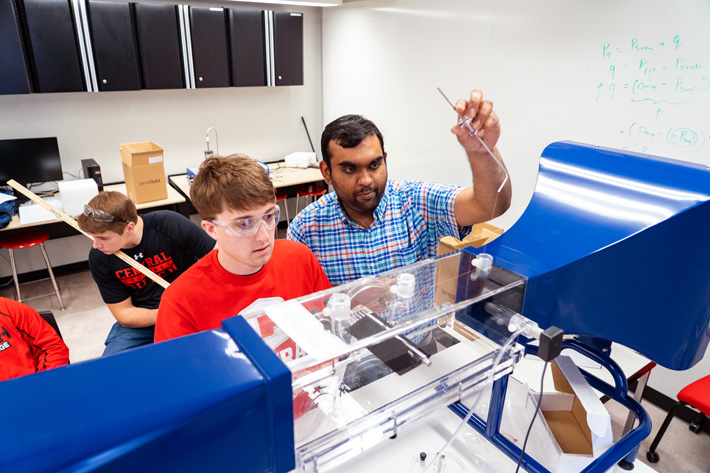
Embracing Evolving Pedagogical Approaches
For many years analysts have predicted the work of faculty will transition from the “sage on the stage” to the “guide on the side.” Though oversimplified, the underlying concept remains relevant to our interests. Pedagogical design has evolved through time to embrace an array of techniques that foster more interactive learning experiences, suitable to varying academic disciplines and professional fields of study. One-size-does-not-fit-all and adaptations are common within broad patterns of change. New technologies, including the use of learning management systems for organizing course-related activities and materials, are ubiquitous. Classroom, lab and studio technologies also have advanced considerably as have pedagogical methods in relationship to these new tools. The process of teaching and learning has been on an evolutionary path for generations, so this pattern is not new. To this point, however, what has been maintained is that education is still fundamentally a human enterprise, aided by various instructional technologies and pedagogical approaches.
Some changes exist in the postsecondary landscape that are worth noting. The expansion of online courses has created a cottage industry of Online Program Managers. These businesses seek to aid institutions in the development and delivery of online courses as a vendor. This is essentially outsourcing the process. There is a catch, however. It is common for these businesses to assert ownership of the intellectual content of the courses, as well as the underlying design within their technology base. Accordingly, a faculty member may forfeit intellectual property rights in exchange for compensation. Further, it is typical for OPMs to capture 50% to 60% of the gross revenue in exchange for the upfront investment. The institution then receives the net revenue margin.
Also present in this marketplace are online course providers who have discovered the OPM model has greater profitability, and they are likewise moving into the OPM model in addition to or replacement of their own course creation. Similarly, textbook publishers are eyeing this market and seeking to integrate the development of course materials with course delivery. Larger universities also have entered the mix to provide existing online courses to other institutions. In addition, various online consortia have emerged in which institutions can sell online courses to other colleges and universities.
This is a marketplace for course content and delivery that is far from maturity but is expanding and evolving rapidly. Many failures will occur along the way, but we should anticipate that there will be mergers and realignments that seek to organize and aggregate the content for learning into the design and development of courses or modules available for institutions to utilize for a price. In this world, the “guide on the side” could take on new meaning if the expectations of faculty members gradually shift from professing to curating. A benevolent view of this suggests that faculty members would retain the same kind of curatorial role they play now in developing courses, but with far more resources. Further, advocates argue this would allow faculty members to spend more time working with students individually or in groups and creating in-person learning opportunities that are more highly experiential. A skeptic’s view is that the learning content and course delivery will be homogenized by aggregation and systemization. Further, the context of the learner will be lost, and the intent of a thoughtfully integrated curriculum will be fragmented by the arbitrary assembly of disjointed courses. This debate will continue for years to come but will be shaped by forces beyond the institution-level as the underlying course materials needed to support classroom instruction are developed by others beyond the reach and influence of any one institution.
Discussion Questions
- How might Central’s mission, vision and values be informed and influenced by aggregated and coordinated approach to course content and delivery?
- In what ways might the interaction of students and faculty evolve in the years to come?
- To what extent and in what ways might college teaching as a profession evolve in the future?
- How might policy makers at state and federal levels view the potential for aggregated and coordinated course development on a large scale?
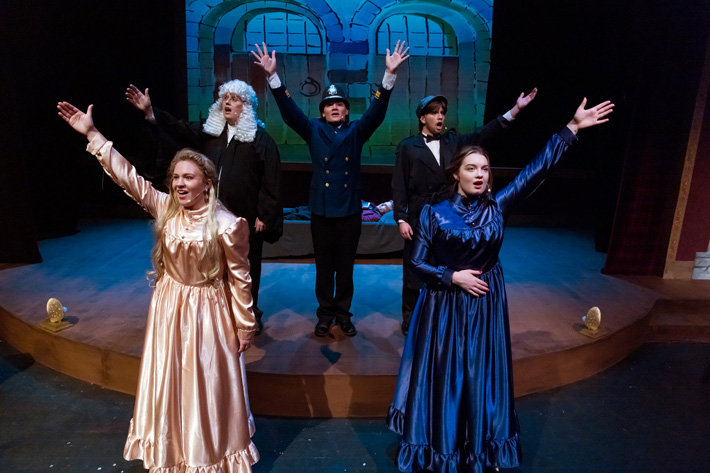
Guiding the Ongoing Development of our Academic Program Portfolio
In recent decades, the evolution of academic disciplines and professional fields of study has been top-of-mind for educators. There is considerable angst associated with these changing patterns as the body of knowledge continues to expand rapidly and societal trends are favoring some areas of inquiry over others. The great challenge is found in discerning what these changing patterns tell us about the future of postsecondary education.
Following World War II, the breathtaking expansion of higher education was fueled by a potent combination of increasing population (birthrates and immigration) and enormous public policy initiatives (GI Bill and Title IV funding). The result was a societal perspective that viewed a college education as the ticket to a secure future. Through time that standing has eroded due to declining population and diminishing public funding in relationship to cost and price increases. The value proposition has become less persuasive to many as a focus on resource efficiency for both families and government entities is tied directly to specifically defined job-related outcomes for which institutions of higher learning are held accountable. There are myriad factors at work in this maelstrom of change, but the net result is more student and parent interest in academic disciplines and professional fields of study that, by perception at least, are most closely tied to career interests and economic results. This pattern is a frustration to many of us who have labored long in the vineyards of the liberal arts, particularly the arts and humanities.
Any thoughtful review of Central’s mission, vision and values needs to take into consideration the depth and breadth of the learning opportunity we seek to provide. The task is not to define a curriculum or course of study. Our aim is to understand and articulate what we aspire to see in our graduates. The choices they make in pursuit of their interests have been and always will be theirs. An academic community’s opportunity is to build on a learner’s core academic or professional interest by attending to developmental needs as the transition from adolescence to young adulthood unfolds.
Opportunities exist to broaden the perspective learners have about themselves, others and the world that surrounds them. There also are opportunities to facilitate the integration of content knowledge and the application of that knowledge in practice settings. The relational dimensions of learning cause us to ponder the intense interpersonal connections of students and faculty and the dissatisfaction we often associate with a more transactional model in which the distance between teacher and learner needs to be reconciled. Diverging into a conversation about the learner may be the most important task we undertake. From this, all other ideas about the scope of our endeavors will flow.
The academic program portfolio will be necessarily fluid through time, just as it has been throughout our history. Over time, our degree levels have changed. The majors, minors and course offerings we have made available have evolved. Various arguments can be offered regarding the relative emphasis of our academic program offerings, but that is task for another day. The guidance needed from our mission, vision and values begins with the question, “Who is the learner and what does this learner need to learn?”
Discussion Questions
- Who is the learner and what does this learner need to learn?
- How might the anticipated needs, interests and expectations of our learners shape or reshape our educational purpose?
- In what ways might emerging trends in society, in general, and the workplace, in particular, shape or reshape our programmatic ambitions?
- What considerations might attend future deliberations regarding degree levels and the scope of the academic program portfolio?
- What role should the traditional “liberal arts” play in informing and influencing the scope of our programmatic offerings?
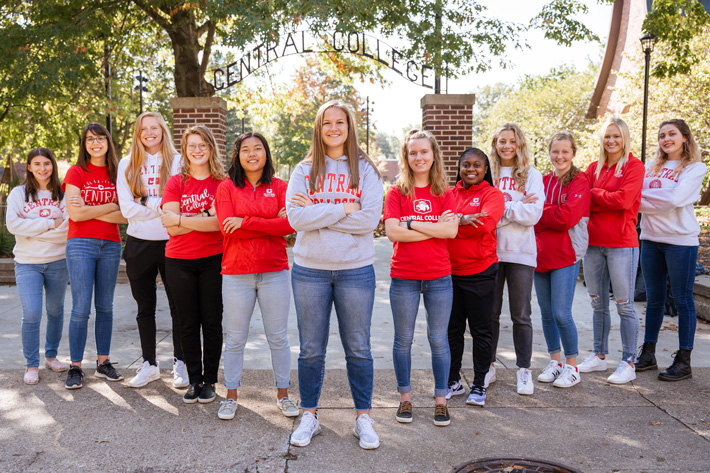
Building and Sustaining a Culture of Inclusion
The core tenants of Central’s Welcome Statement have long established the principles by which we seek to live in inclusive community. Below is an extended excerpt that frames the essential principles. Rather than attempting to rearticulate this statement, it is offered below as foundational elements that would likely inform our sense of mission, vision and values in this regard.
Welcome Statement
Central College’s Welcome Statement (Nondiscrimination Policy) is designed to promote and protect safety, respect and integrity in relationships among all members of our community. Central College is committed to fostering inclusivity on campus and strives to create a community of students, faculty and staff who are dedicated to supporting and advancing the mission and goals of the college. To achieve these ends, the Central College community establishes a safe environment for all persons, including those considered diverse by contemporary and sometimes changing standards.
As a college community, we commit to a process of actualizing our mission and goals, thereby striving to achieve congruence between our daily actions and the ideals expressed in our guiding principles. As one of our goals, we promote skills and values essential to becoming responsible citizens in local, national and international communities. Further, we seek opportunities to experience and appreciate the diversity of cultures and perspectives present on campus, in the United States and the world, recognizing the necessity to relate knowledgeably and sensitively in an increasingly complex environment where diversity is to be valued.
As an inclusive academic institution, we embrace and support students, faculty and staff from various spiritual perspectives who endorse the values of acceptance, mutual respect, justice, generosity, compassion, forgiveness and service to others. We aspire to be a community whose members act with consideration for the physical, intellectual, spiritual and emotional well-being of others. We seek to create mutually respectful interactions and positive meaning in relationships with persons of every ethnicity, race, national origin, ancestry, color, socio-economic class, creed, religion, philosophical belief, marital status, disability, physical appearance, sex, age, sexual orientation, gender expression and identity, and organizational affiliation.
With due regard for the principles of freedom of expression and academic freedom, this policy seeks to encourage attitudes of civility necessary for meaningful exchanges between people. All members of the college community are responsible for creating an atmosphere that fosters openness, mutual respect and diversity. The application of the college’s nondiscrimination policy will often involve conflicting interests, particularly when applied to freedom of expression. Because the primary business of the college is liberal education and because liberal education cannot take place without the free, open and civil exchange of ideas, the application of the nondiscrimination policy should always be made with consideration of how best to preserve the free, open and civil exchange of ideas.
As educators our desire is to embrace the richness of humanity as a stimulant to our shared learning. The employers, graduate and professional schools and service organizations who receive our graduates consistently emphasize the importance they place on hiring or selecting those who are prepared to effectively encounter human difference and diversity. This is uniformly presented to us as a critical skill set for a successful academic and professional life. Accordingly, it is in the knowledge gained, the skills advanced and the experiences lived that our capacities for encountering “the other” are forged.
Yet, the extent to which our students initially come to us prepared to encounter human difference and diversity, ensure equitable treatment for all and foster inclusive participation varies considerably. To advance this interest, we create the space necessary for the expression of differing viewpoints related to public policy perspectives, social norms and expectations, political affiliations and religious convictions. We do so by sponsoring opportunities for civil discourse and modeling respectful dialogue.
We also insist that everyone on our campus feels safe, welcomed, affirmed and supported. Building and sustaining a culture of inclusion is now and always will be an ongoing task, particularly given the explosion of human development that occurs during the four critical years of college. Expectations for how we encounter others is clear to ensure that we maintain an environment free of discrimination and harassment.
The external forces surrounding us are complicated as social dynamics and policy making at all levels of society intensify with more heated political rhetoric. Central, however, has the opportunity to generate light and not heat.
Discussion Questions
- To what extent does the Welcome Statement articulate our sense of mission, vision and values with regard to our desire to welcome diversity, promote equity and foster inclusivity?
- Are there aspects of this statement we should revisit?
- Are there any dimensions of inclusivity missing from this statement we should consider?

Understanding and Interpreting our Role in Intercollegiate Athletics
In any given year about 70% of our incoming first-year students will indicate an interest in intercollegiate athletics. Not all will follow through on that interest. Still, by the time our students graduate each year, roughly 50% will have competed on one or more of our athletic teams. Our athletics history is rich and marked by sustained success. As an internal consideration, intercollegiate athletics has been an important contributor to enrollment, campus-life and alumni engagement. The externalities, however, are far more complicated.
The antecedents for the emerging controversies are deeply rooted in the past, but the present manifestations are a continued cause for concern. The role Central has played in NCAA Division III athletics has been celebrated widely, particularly the articulation of the DIII philosophy originally outlined by our late President Emeritus Ken Weller. The very concept of a “student-athlete” emerged from the values this college associated with intercollegiate athletics many years ago. That vision remains core to our sports programs, but the broader landscape of intercollegiate athletics has moved further and further from that ideal. In our circles this is commonly referred to a “DI creep,” simply meaning that the decisions made, and actions taken at the Division I level seem to have a cascading effect on Divisions II and III.
Recent news reports regarding the $7.5 billion television broadcast contract for the top conferences in Division I remind us money now rules intercollegiate athletics. During a summer meeting of the NCAA Division III Presidents’ Advisory Group, outgoing NCAA president, Mark Emmert, forecasted this large television contract. He noted that the “Power Five” conferences (or as he also suggested the “Power Two” conferences) will change intercollegiate athletics. His stated concern was that money at that level will change the compensation for coaches to much higher levels and the pressure to pay athletes will only grow. The downstream effects of this are uncertain, but change is coming.
The regulations regarding “Name, Image and Likeness” are a good example. We have seen at the DI level the gathering and alignment of alumni, boosters and businesses interested in promoting these very visible teams with significant economic impact for both institutions and communities. While institutions cannot compensate the athletes directly, these outside organizations can and will. The result is a pooling of resources to pay individual athletes for appearances that is expected to reach as high as six to seven figures in compensation. Many of us would see this as an unlikely scenario for DIII. To be sure, the levels of compensation contemplated at the DI level are not possible in DIII. Nevertheless, we are not immune to some effects. Already in DIII (even in the American Rivers Conference) we are seeing some institutions lay the groundwork for alumni, boosters and businesses to pool resources and provide compensation for athletes outside of the institution.
The recent restructuring of the NCAA constitution has created greater autonomy for each of the three divisions to set their own course. One must consider the extent to which these divisions with diverging interests can stay in the same organization. Here, again, money talks. The funding DIII institutions receive from the NCAA to cover the costs of postseason play are derived primarily from revenue associated with the DI basketball championship tournament known commonly as “March Madness.” Those resources fund the travel and expenses as our teams advance to the postseason. If that funding stream were to dissipate, then the resource implications for the college would be highly impactful.
Other complicated dynamics present in intercollegiate athletics include Title IX policies, the role of transgender athletes and the long-term risk of concussion injuries, among others. As Central continues to pursue its interests in intercollegiate athletics, it will do so in a rapidly evolving context.
Discussion Questions
- How might Central’s mission, vision and values be informed or influenced by the changing landscape of intercollegiate athletics?
- What are the essential elements of intercollegiate athletics we would seek to perpetuate in the years to come?
- What guiding principles would we rely on to understand and interpret the role Central’s athletics should play in the changing landscape of intercollegiate sports?
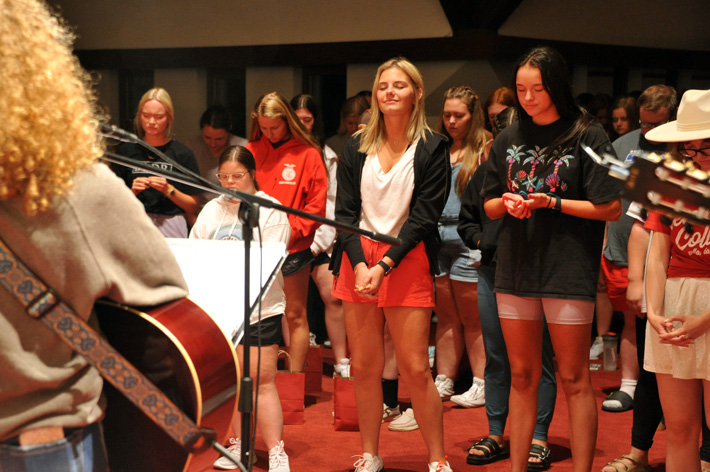
Understanding and Interpreting our Church Affiliation
Our history of church affiliation is well known to most, but to state it simply, Central, since its founding in 1853, has been connected to a church denomination. For the first 63 years this was with the Baptist Church through the Baptist Education Society of Iowa. Beginning in 1916, this was transitioned to the Reformed Church in America, a relationship that continues today. Through the years, the nature of that affiliation gradually has evolved to make the college more independent of the church in a manner consistent with the other colleges and seminaries affiliated with the RCA. Still, the college’s Articles of Incorporation clearly express this affiliation, noting the college was established under the particular auspices of the RCA. In addition to the overall corporate status of the college, the relationship is outlined generally in the RCA Book of Church Order that requires a minimum of three trustees to be members of RCA churches.
Beyond these more formal, governance-related aspects, there is a statement of covenant that articulates the aspirations for the relationship of the RCA as a denomination to its three colleges: Central, Hope College and Northwestern College. This statement was last reviewed and adopted by the RCA General Synod in 2010. The entire document, which includes an extended preamble, is available for review. What follows is an excerpt from that document that delineates the specific expectations shared by the RCA and its affiliated colleges:
COVENANT OF MUTUAL RESPONSIBILITIES
Between the RCA Colleges and the Reformed Church in America
The colleges covenant with the Reformed Church in America to:
- Examine the words and works of God and humankind in the spirit of openness and humility, recognizing that all truth is God’s truth.
- Infuse and deepen a superior education in the liberal arts with a mature understanding of the sources and resources of the Christian heritage; maintain an appreciation for the Reformed tradition and its implications for the integration of faith and learning.
- Provide an atmosphere of search and confrontation that liberates the mind, enhances discernment, enlarges sympathies and encourages the commitment of all students so they may achieve full personal development and self-definition.
- Provide a community of learning, love and forbearance that fosters unity in the presence of diversity.
- Engage the church, providing it with courageous and timely intellectual leadership to guide its understanding of itself and strengthen its witness to a tense, ever-changing world, while giving earnest consideration to the views and counsel of the church.
- Inspire students to a contemplative and self-giving life, alerting them to the demands and needs of the time, while challenging them to serve.
The RCA covenants with Central, Hope and Northwestern colleges to:
- Assure full freedom to pursue truth and encourage the colleges in their responsibility and Christian responsiveness.
- Provide wholehearted interest, favor and financial support; encourage the colleges in their own resourcefulness.
- Urge and aid its young people to attend one of the three RCA colleges, to pursue a life of Christian discipleship and, if appropriate, to consider the pastoral ministry.
- Interpret to the church the nature of higher education in the Christian tradition, its integrative mission, its unique requirements and limitations, its expected and unexpected outcomes in the lives of students and those they touch around the world.
- Encourage the colleges to define and refine their image and mission as an RCA school and to fulfill their ecumenical Christian calling.
- Cultivate mutual trust and initiate consistent and meaningful communication.
Central continues to enjoy the warmth of relationship with the RCA and given the span of time has many alumni and friends with deep RCA roots. The college continues to host the RCA General Synod from time-to-time, and we partner in various ministry-related opportunities, programs and activities. While limited, there are a few churches that continue to support the college financially. No direct funding comes to the college from the national church. Set within this context, however, and as noted above in our welcome statement, Central does not discriminate on the basis of religion. Members of the board of trustees, administration, faculty, staff and students present many different religious traditions or none at all. At present approximately 5% of our enrolled students indicate an affiliation with an RCA church, while a majority indicate some other affiliation with a Christian church.
The RCA is currently experiencing challenges over theology and church polity as disagreements over human sexuality have given rise to a divided opinion. These differences have been present for many years and remain unresolved. The lack of resolution and the inability of the body of churches to reconcile these differences has resulted in the departure of churches from the RCA, including several in our immediate region. The departure of churches reflects more of a splintering than a split as the departing churches are affiliating with no fewer than six different entities. While many questions remain on the scale and timing of the transitions, churches are expected to determine and complete any transitions by 2026.
In one sense, the impact to the college directly is minimal since we are not directly affected by these changes and do not anticipate any collateral effects to visit us. Indirectly, however, we have alumni and Pella community members who are affected, have views and opinions about the present and future of the RCA and interpret the college’s role in this regard from differing perspectives.
With respect to Central’s mission, vision and values, questions are emerging about the future status of our church affiliation as the vitality and viability of the RCA remains uncertain. Our understanding and interpretation of church affiliation presents important questions to explore.
Discussion Questions
- How might changes in the vitality and viability of the RCA inform or influence our sense of Central’s mission, vision and values?
- In what ways are our values as an educational institution informed by our church affiliation and ecumenical Christian tradition?
- As denominational affiliation among Christians continues to be fluid, what expectations might students and parents have for an institution that is church affiliated and founded in the ecumenical Christian tradition?
Conclusion
In the coming days opportunities for campus-wide participation in this conversation about mission, vision and values will be made available. Our expectation is this may take many forms including, but not limited to:
- Round table discussions
- Lunch and learn programs
- Various group meetings
- Faculty meetings and forums
- Divisional, departmental and office meetings
- Online discussions
- Informal conversations over a cup of coffee
- Individual submissions
Information will be shared periodically as this two-year process unfolds to guide participants to these opportunities. In the meantime, members of the campus community are encouraged to begin reflecting on and discussing these themes and topics. Please feel free to share comments and resource materials to stimulate conversation by emailing them to centralmission@central.edu.
We remind ourselves often that we work for our successors. While that is true every day, it is especially true in this exercise that will inform and influence ideas about the college for many years to come. This is a period of enormous societal change, but in times like these, articulating and embracing a vibrant mission, an ambitious vision and a deeply held set of values will be just the right platform for success in balancing tradition and innovation in the years to come. Ultimately, the success of our work will be measured by our capacities for remaining relevant in changing landscapes and resilient in responding to those changes in a timely way. It will take all of us to do this effectively and ensure Central endures for many future generations.
